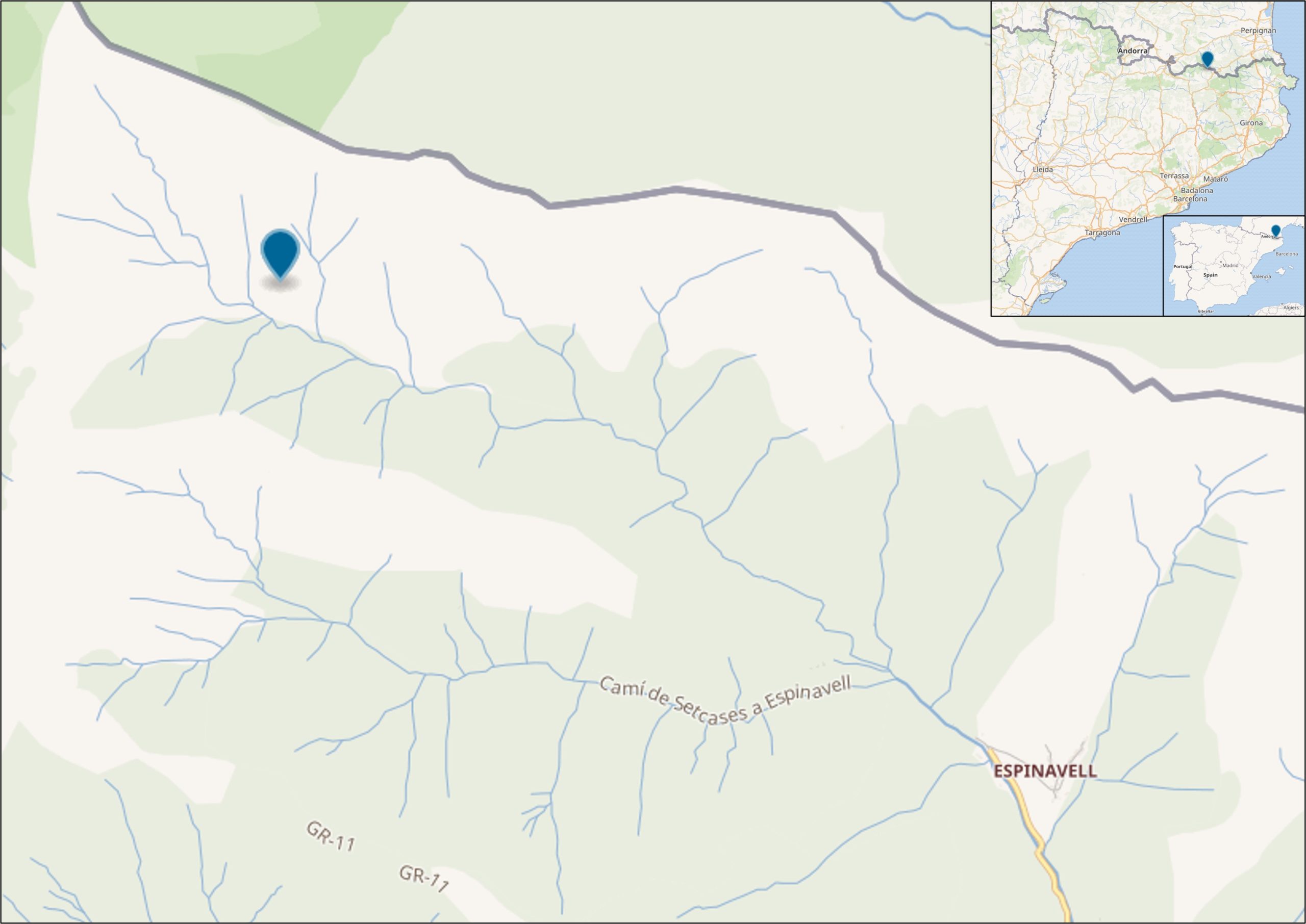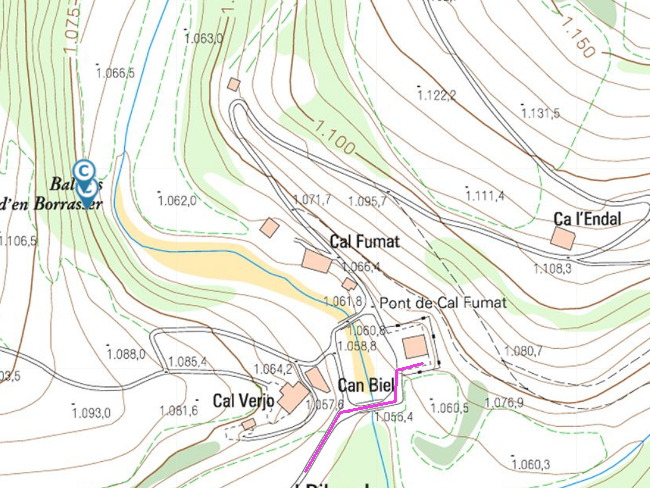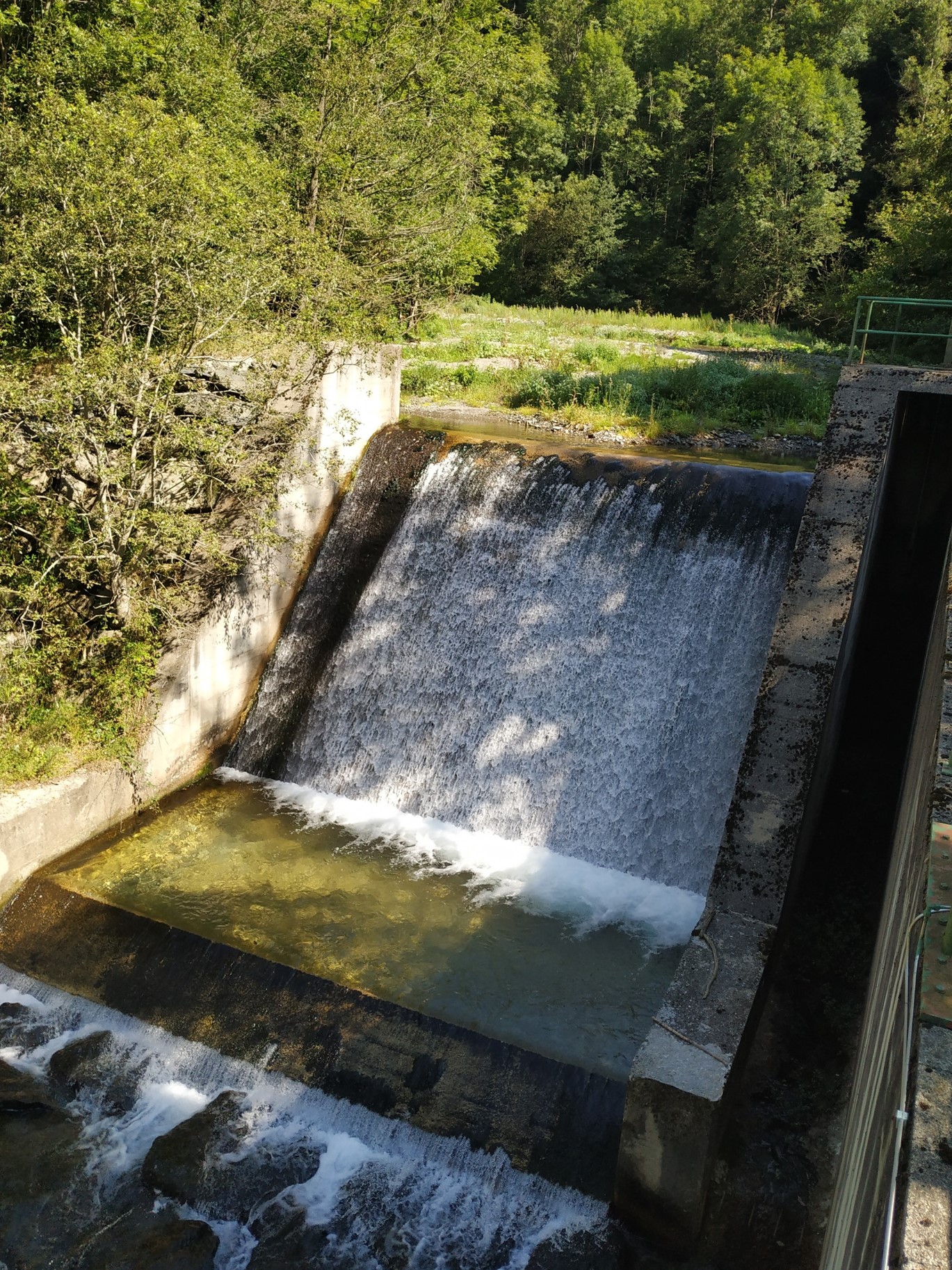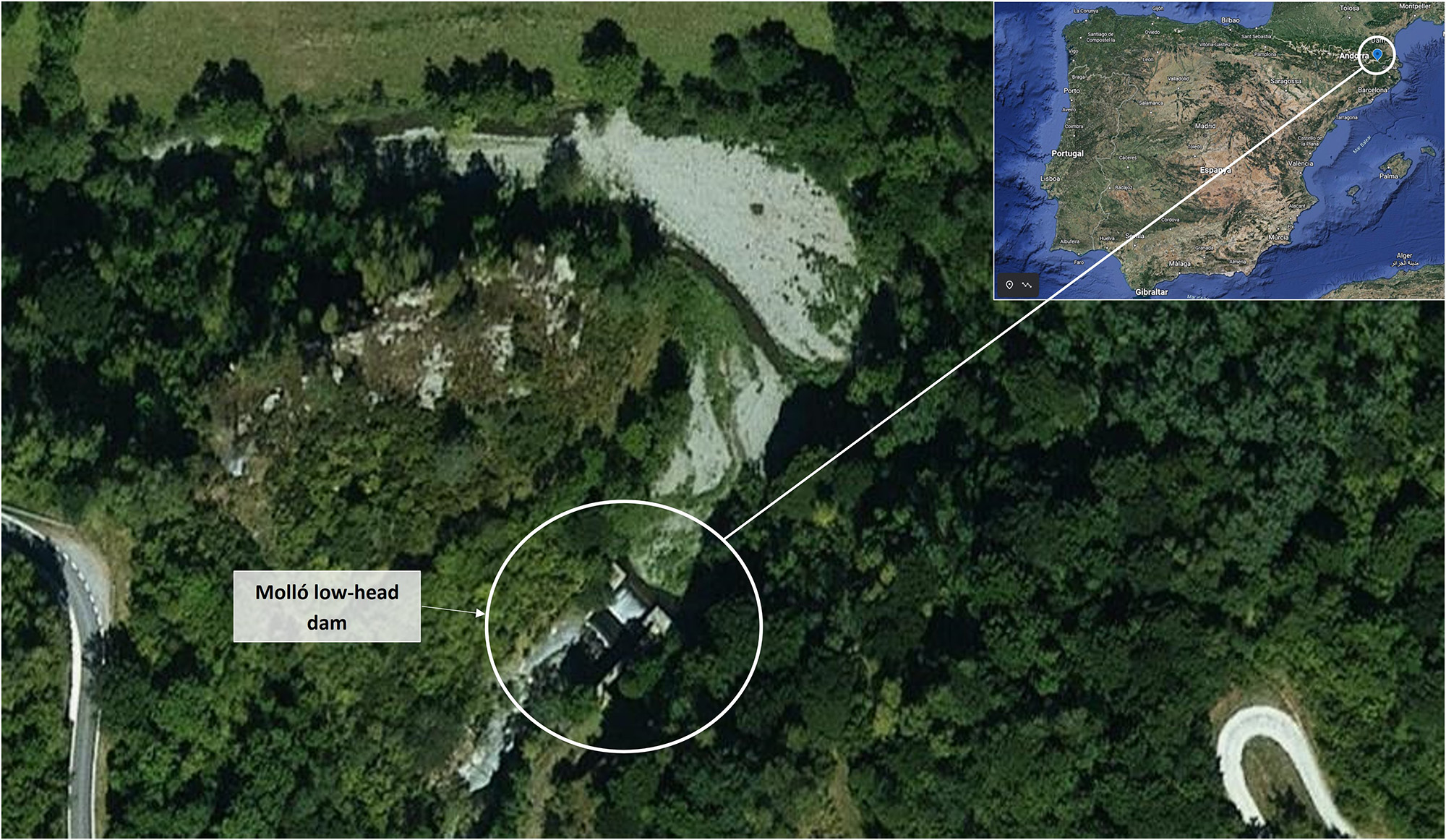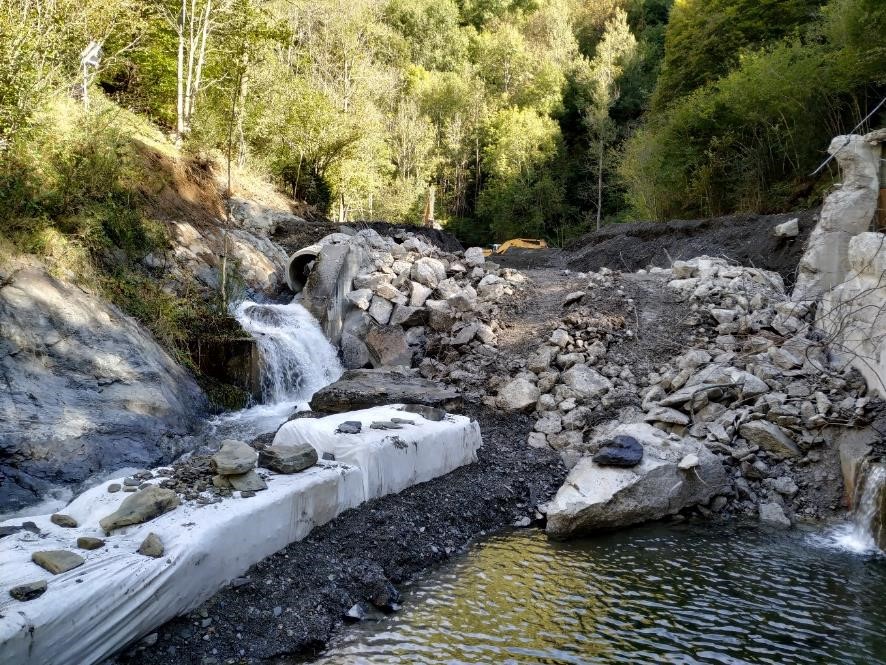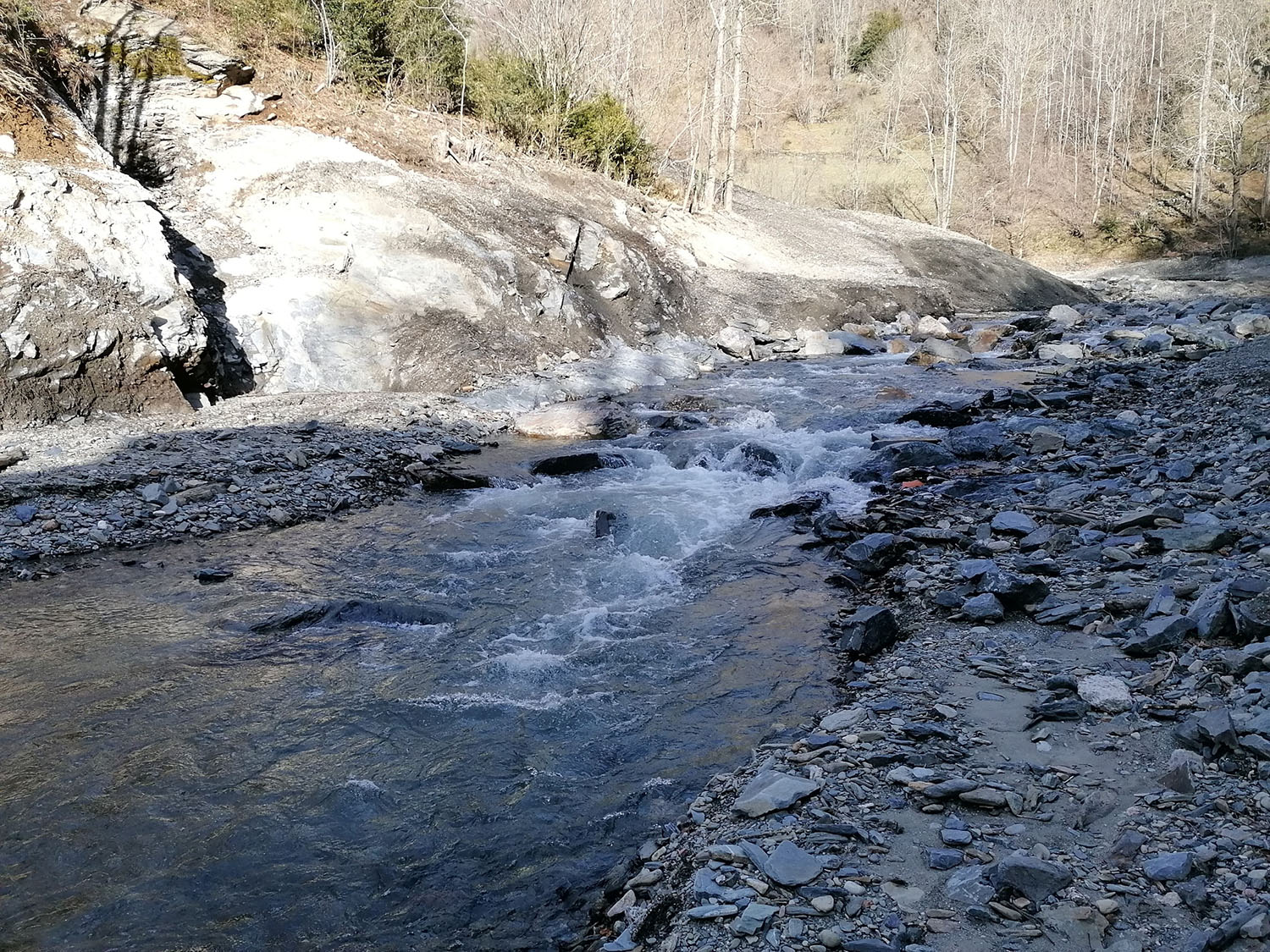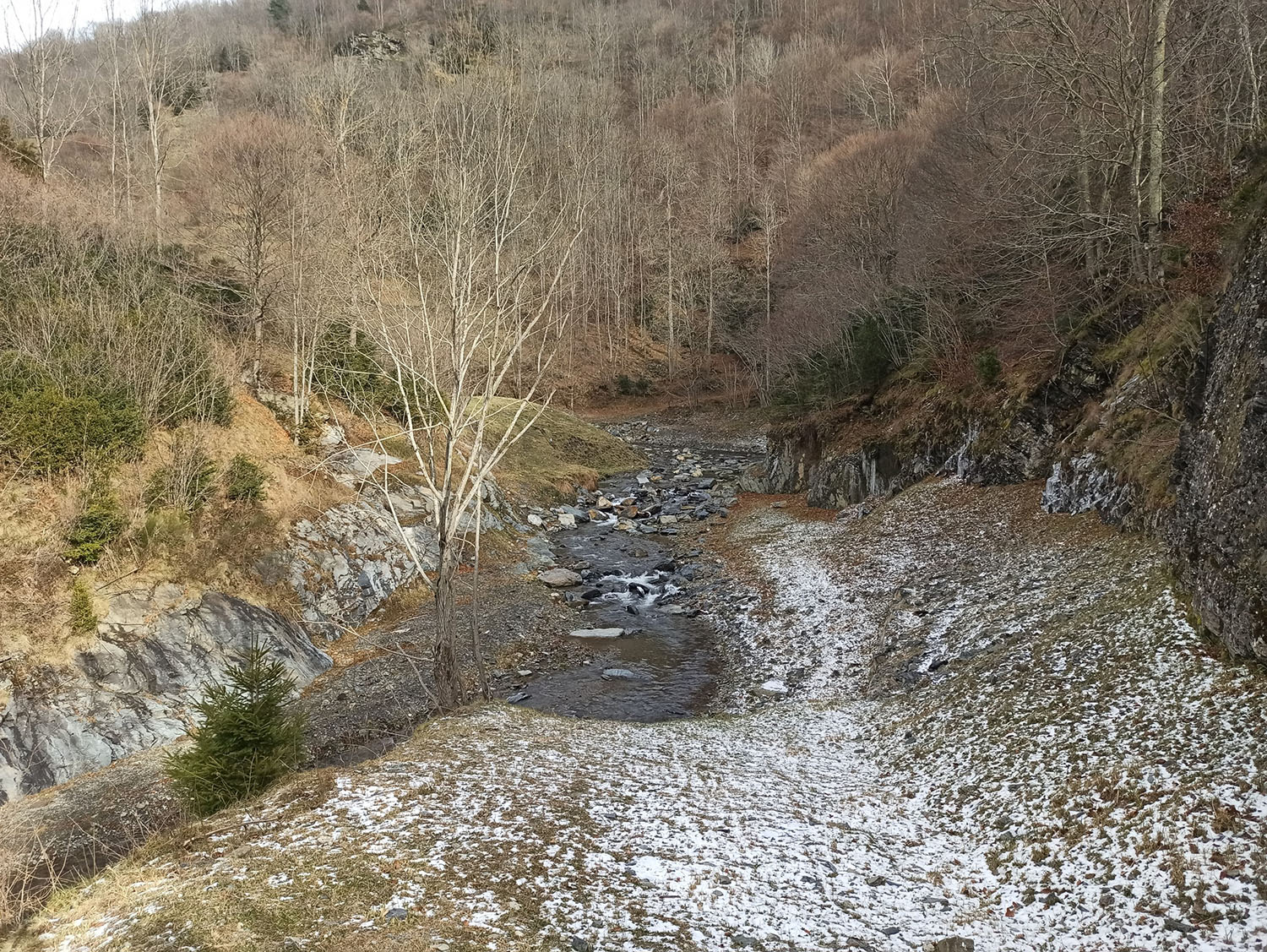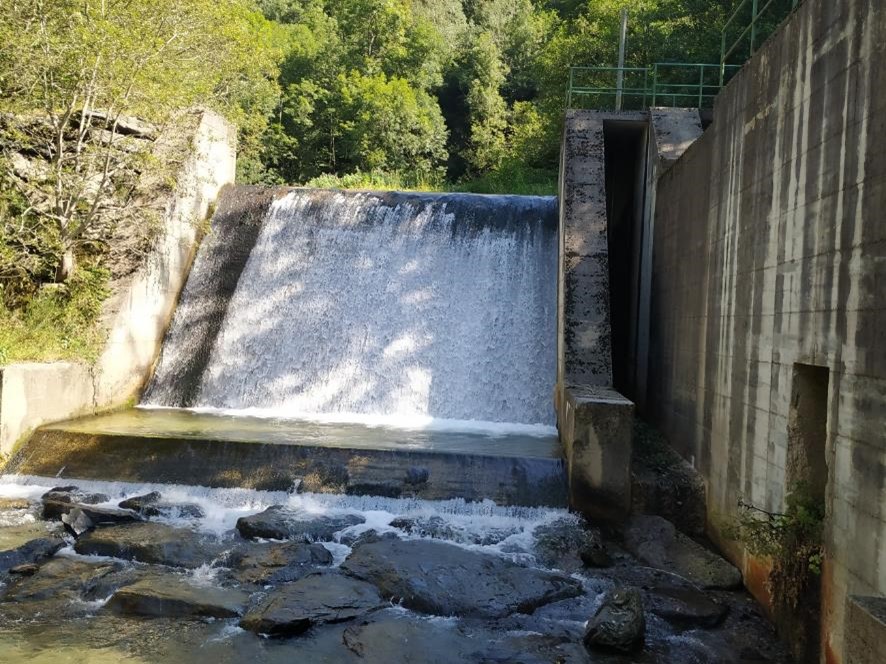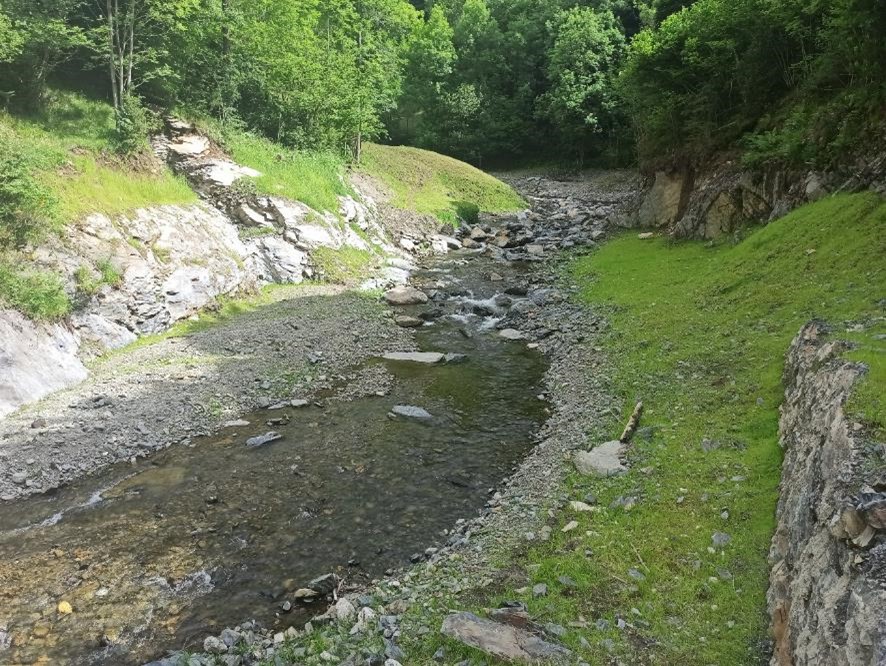Demolition of the Molló mini-hydropower dam, a project included in the Green Agenda of Catalonia
River Ritort
River Ritort springs from the Pyrenees Mountain range in North-east Catalonia, Spain (Figure 1). It is a typical Mediterranean mountain river with a drainage area of 55.7 km2 and a total length of 13.5 km. It is of great ecological importance, since it inhabits valuable fish species, like common trout (Salmon trutta) and native species, like Catalan chub (Squalius laietanus) and Catalonian barbel (Barbus haasi). The latter is also listed as “vulnerable” in the IUCN Red List of Threatened Species. In addition, River Ritort runs through a well-developed and preserved forest with high biodiversity, including alders (Alnus spp.), purple osier (Salix purpurea), olive willow (Salix eleagnos) and ash trees (Flaxinus spp.).


